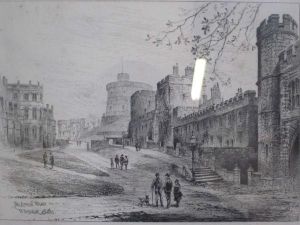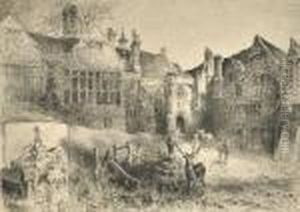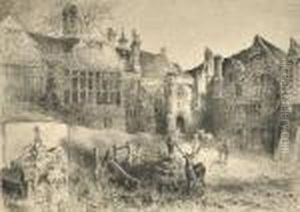Herbert Railton Paintings
Herbert Railton, an English artist and illustrator, was born in 1857 in Pleasington, near Blackburn, Lancashire. He was known primarily for his adept and detailed pen-and-ink drawings, particularly his architectural renderings and illustrations of buildings, street scenes, and landscape settings. His work is characterized by a distinctive style that captured the essence and atmosphere of Victorian and Edwardian England.
Railton began his artistic education at the Liverpool School of Art, where he developed his skills in drawing and illustration. He later moved to London, where he furthered his career as an artist. Railton found a niche in illustrating books, magazines, and periodicals, where his detailed work was in high demand. Throughout his career, he provided illustrations for a wide range of publications, including 'The Builder', 'The Building News', and 'The British Architect'.
One of Railton's most significant contributions to the field of illustration was his ability to depict historical and contemporary buildings with accuracy and a sense of romanticism. His work was not just about precise representation; it also conveyed the mood and spirit of the subjects he illustrated. Railton's illustrations often included bustling street scenes filled with people, which added vitality and context to the architectural features he so meticulously rendered.
His work was highly regarded, and he collaborated with various writers of the time, illustrating editions of works by Charles Dickens and other notable authors. Railton's drawings have been used in numerous books on architecture and topography, offering a valuable visual record of many buildings and places, some of which have since been altered or no longer exist.
Herbert Railton's career was prolific, but his life was relatively short. He passed away in 1910 at the age of 52. Despite his early death, Railton left behind a substantial body of work that continues to be appreciated for its artistic merit and historical value. His drawings remain a testament to his skill as an illustrator and his dedication to capturing the architectural spirit of his time.


